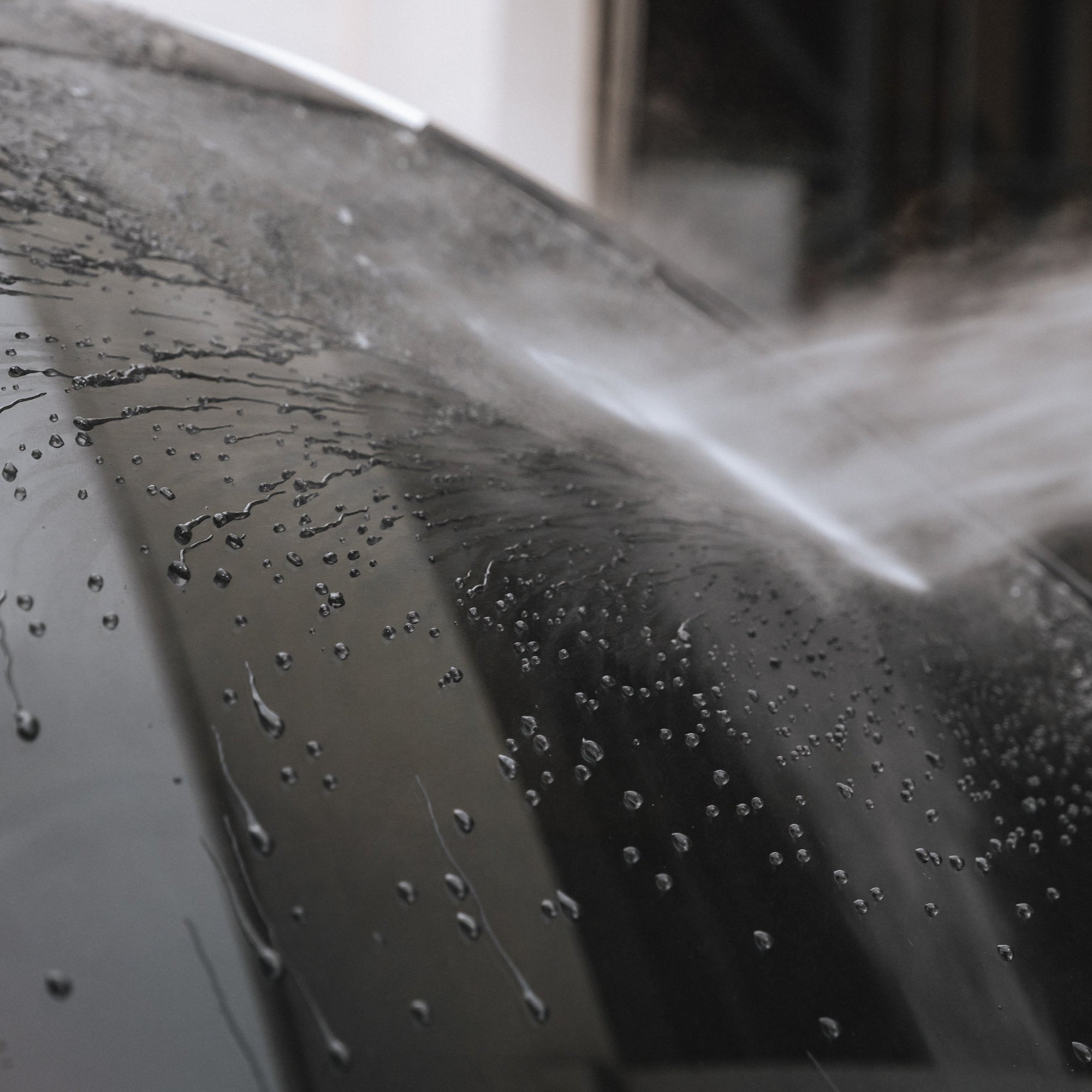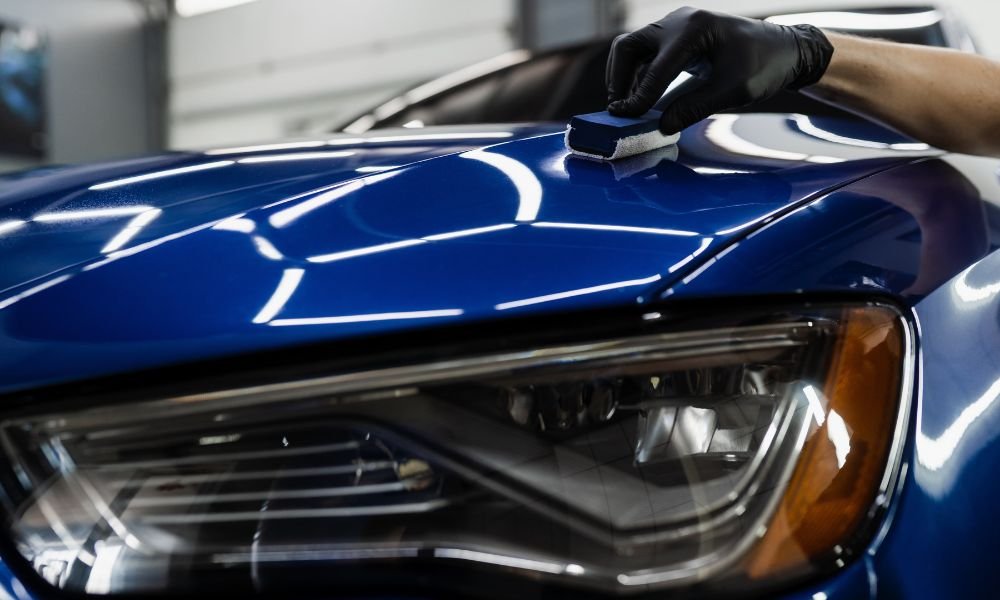Ceramic Coating: The Secret to Keeping Your Auto Looking New
Ceramic Coating: The Secret to Keeping Your Auto Looking New
Blog Article
The Relevance of Ceramic Coating: Safeguarding Your Vehicle's Outside With Precision
In an era where maintaining the useful and aesthetic integrity of your car is vital, ceramic coating emerges as an essential option. With its one-of-a-kind bonding residential or commercial properties, ceramic finish supplies a degree of protection that far surpasses conventional waxing techniques.
Benefits of Ceramic Coating
When it pertains to maintaining a vehicle's aesthetic allure, ceramic finish offers significant benefits. This sophisticated safety layer provides a resilient shield against environmental contaminants, including dust, crud, and harmful UV rays. By forming a semi-permanent bond with the vehicle's paint, ceramic coverings efficiently prevent oxidation and fading, guaranteeing that the vehicle maintains a glossy, showroom-like coating for an extensive duration. This not only enhances the vehicle's aesthetic charm however also contributes to its lasting worth.
In enhancement to its safety high qualities, ceramic finishing provides amazing hydrophobic homes, causing water and various other liquids to grain off easily. This function streamlines the cleaning procedure, as dust and debris are much less likely to follow the surface, reducing the frequency and initiative required for upkeep. Moreover, the covering's resistance to chemical spots from acidic pollutants like bird droppings and tree sap is another notable advantage, reducing possible paint damage.
Ceramic coatings likewise boost scratch resistance, offering a layer that can soak up small abrasions and swirl marks. This attribute is especially helpful in preserving an immaculate surface, decreasing the probability of noticeable imperfections and protecting the honesty of the car's paintwork in time.

Exactly How Ceramic Layer Works
Understanding the auto mechanics behind ceramic finishing discloses its efficiency as a safety remedy for lorries. Ceramic coverings are essentially liquid polymer applications that chemically bond with an automobile's manufacturing facility paint, producing a protective layer. This layer serves as an obstacle versus environmental pollutants such as dirt, ultraviolet, and grime rays, which can degrade a vehicle's exterior over time. The key part in ceramic layer is silicon dioxide (SiO2), which stems from quartz crystals and is understood for its outstanding firmness and toughness.
Application of ceramic finish includes a precise process. This shield boosts the cars and truck's gloss and hydrophobic homes, promoting simpler cleansing by causing water and pollutants to grain and slide off easily.
Furthermore, the layer's molecular structure offers resistance to small scrapes and chemical stains. Unlike waxes or sealants that rest on top of the paint, ceramic layers integrate with the surface, using durable protection. This integration is essential to its performance, ensuring the car's surface stays immaculate for years.
Comparing Ceramic Coating to Alternatives
In the realm of automobile protection, ceramic finishing stands as a powerful choice when compared to conventional options such as sealants and waxes. While waxes offer a short-term lustrous finish, typically lasting just a few weeks to months, ceramic coverings offer a longer-lasting option, typically withstanding for years. This resilience is attributed to the chemical bonding that takes place when ceramic layers are used, developing a solid layer that is immune to ecological risks.
Contrastingly, sealants, although even more durable than waxes, still disappoint the durable protection offered by ceramic finishes. Sealants can generally last for approximately a year, supplying a synthetic guard against certain aspects. They lack the premium hydrophobic homes and UV protection click here to find out more that ceramic layers provide.
In addition, ceramic finishes supply enhanced scrape resistance, which neither waxes neither sealers can properly match (ceramic coating). This is especially beneficial in keeping an automobile's pristine appearance. In addition, ceramic coverings streamline maintenance efforts by lowering the adherence of dirt and gunk, thereby assisting in less complicated cleaning. In recap, while traditional waxes and sealants use standard defense, ceramic finishes provide a comprehensive, lasting remedy that considerably maintains the vehicle and improves's exterior surface.
Application Process Described
Applying ceramic covering to a car requires a precise process to ensure optimal results and toughness. The first action includes completely cleaning up the automobile's surface area to get rid of dust, oil, and previous waxes. This is important for making certain the finishing adheres properly. A pH-neutral hair shampoo and a clay bar therapy are commonly utilized to achieve an excellent surface. As soon as cleansed, the automobile is dried and polished to remove any kind of imperfections, as any existing scratches or swirls can end up being more obvious after the layer is applied.
Following surface area preparation, the application of the ceramic finishing starts. Using an applicator pad, the ceramic finishing is used in small sections to ensure even coverage.
After application, the finish calls for a specific treating duration, throughout which the lorry should be secured from water why not try here and contaminants. This treating process can differ relying on the product but typically varies from 24 to 2 days. Inevitably, this detailed process is critical in accomplishing a shiny and resistant coating.
Upkeep Tips for Long Life
To maintain the long life of a ceramic coating, adherence to a self-displined upkeep routine is essential. Stay clear of automatic car washes, as their harsh brushes can endanger the layer's stability.
Post-wash, drying the vehicle with a tidy microfiber towel stops water spots that might break down the finishing in time. Additionally, use a ceramic finishing booster every few months. These boosters enhance the hydrophobic properties and boost the finishing's protective capacities, ensuring it continues to be efficient against impurities.
Maintain in mind that auto parking locations play a crucial duty in maintenance. ceramic coating. Whenever feasible, park in shaded areas to decrease UV direct exposure, which can gradually damage the finish. For long-term storage space, think about click to read more using an auto cover for added protection versus environmental elements
Conclusion
In verdict, ceramic finish acts as a vital protective layer for car outsides, supplying lasting protection versus environmental elements such as crud, dirt, and uv rays. By creating a semi-permanent bond with the paint, it enhances aesthetic charm while maintaining the vehicle's value. Its hydrophobic homes assist in simpler upkeep, differentiating it from alternate protective approaches. Recognizing the application procedure and adhering to upkeep suggestions are important for making the most of the long life and effectiveness of ceramic coating.
When it comes to protecting a cars and truck's aesthetic charm, ceramic layer uses substantial advantages. By developing a semi-permanent bond with the vehicle's paint, ceramic coverings efficiently protect against oxidation and fading, making certain that the auto maintains a glossy, showroom-like coating for an extensive duration. Ceramic coatings are basically liquid polymer applications that chemically bond with an auto's manufacturing facility paint, developing a safety layer. In recap, while conventional waxes and sealants provide standard security, ceramic coverings provide a detailed, lasting option that substantially preserves the lorry and improves's exterior finish.

Report this page